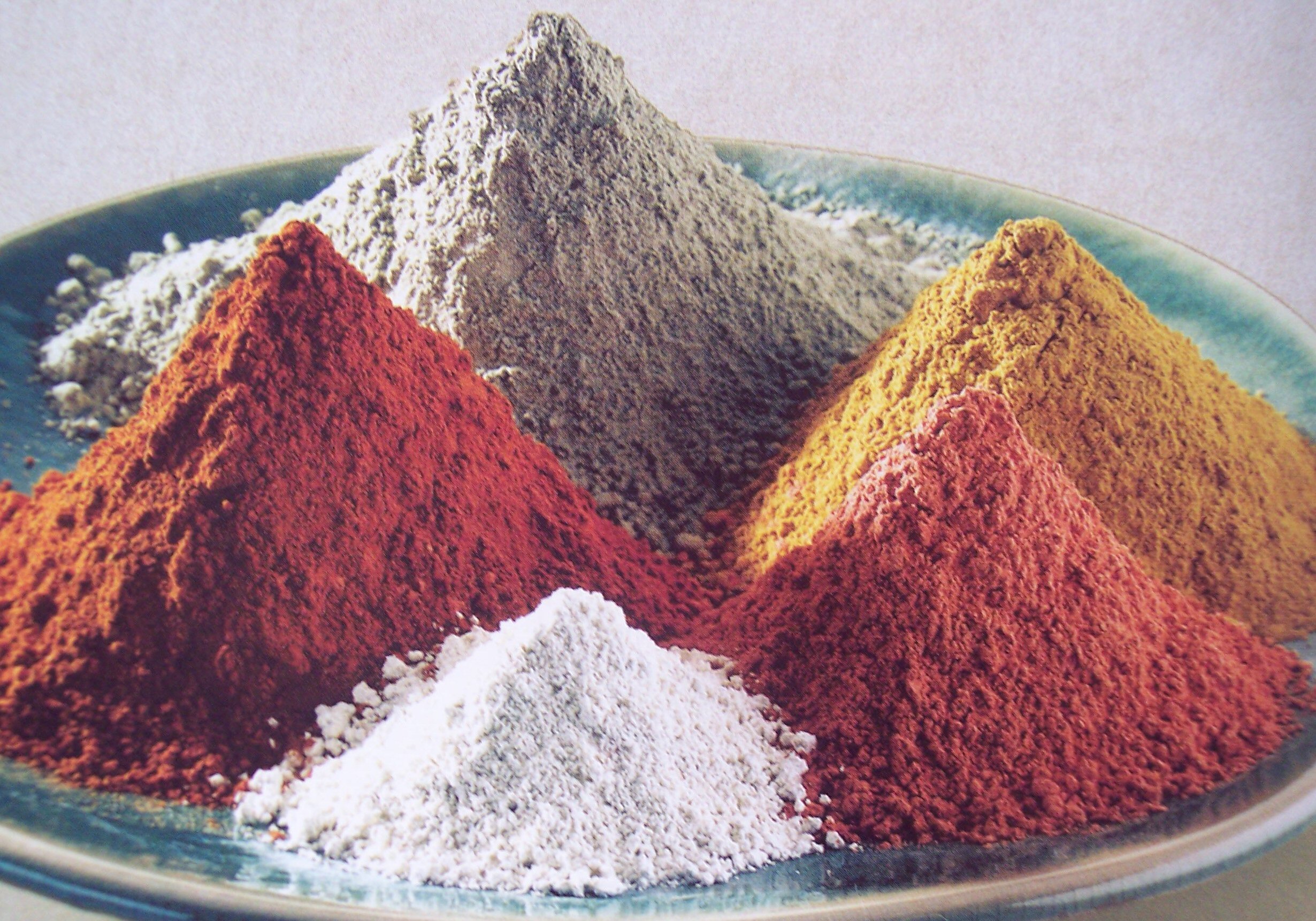How clay works?
 |
All clays have basically the same physical properties that vary in intensity depending on the molecular composition and structure. The molecular composition with its specific mineral content, will also give a specific color to the clay (See our different clay colors). Those characteristics will determine which clays are more interesting and safe for therapeutic applications and which are best for industrial uses. Most bentonite clays are poor-cost-effective clays used for construction (concrete) or to make cat litter! Other clays that remain toxic for therapeutic applications are great to make poteries, porcelaine, etc...
When we study clay samples under a microscope, each grain looks like layers stacked up one on to the other (like a pile of plates). This layered structure gives the plastic properties of clay and its ability to cover a surface. Layers, when hydrated, can slide one on to the others, allowing them to expend or retract themselves. This plastic ability stops as soon as the clay dries.
The mineral composition of the layers will create the specific polarity to the clay. (positive or negative charge). Basically, to make things simple and understanble, the charge of the layers themselves is negative when the charge in the space between each layer is positive.
This specific polarity, a balance between negative and positive charges, gives the binding (fixing) properties of the clay, that are also known as ABsorption and ADsorption. The ABsorption property applies to liquids and is comparable to a sponge; this explains its ability in absorbing liquids and neutralizing odors. Clay can also attract molecules or organisms just like a magnet (ADsorption property). In this case, substances will stick outside of the structure. This property explains its capacity in neutralizing germs (bacteria, viruses, fungi, etc), chemicals, radiations, dead cells and other non-beneficial substances.
Depending on the size of the molecule, the attraction will be done at 3 different levels:
1) Simple ions will be captured inside the layers themselves
3) Macromolecules (big molecules) will stay at the periphery of the layers.
Remember that the ionic charge of clay is very fragile and is easily neutralized by any artificial treatments (additives, washing, irradition, aseptization, etc). Without this specific ionic charge, clay loses its basic properties. This the reason why you should choose a living clay (raw, virgin).
This is the ADsorbtion (fixing) properties that makes clays interesting at the therapeutic level. But as we have mentioned earlier, not all clays can be used for this purpose since, depending on their mineral composition and structure, some clays are very toxic for the body. For more safetiness, look for pharmaceutical grade and food grade clays. To benefit from the optimal properties of clay, always look for living clay - raw, non ionized, unprocessed and free of any additives,which is the quality that we provide on this website. << back to top
 |
 |